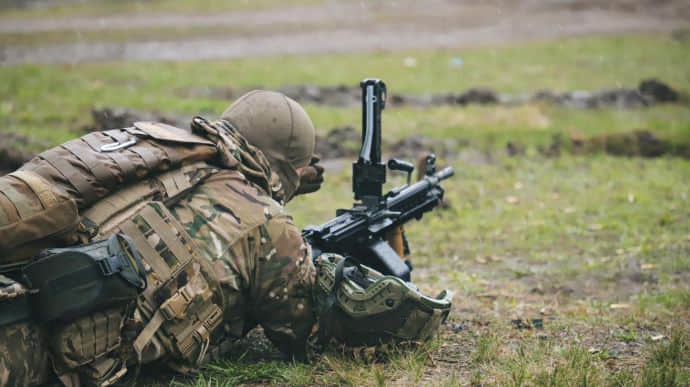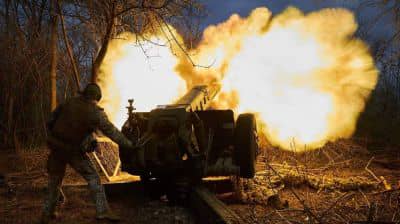Things didn't go according to plan, Ukraine's Commander-in-Chief had to change tactics – WP on counteroffensive

The Washington Post published a long article about the counteroffensive, according to which Ukraine did not gain much, as things did not go according to plan at first. Thus, Valerii Zaluzhnyi, Commander-in-Chief of the Ukrainian Armed Forces, had to change his tactics despite US officials’ advice.
Source: The Washington Post (WP) with reference to sources among US officials and the Ukrainian army
Details: WP published a two-part story on the counteroffensive based on interviews with more than 30 Ukrainian and US officials, as well as more than 20 officers and soldiers on the front line. Some officers and soldiers spoke about military operations on condition of anonymity.
WP stated that the 47th Separate Mechanised Brigade was supposed to launch a counteroffensive on 7 June to advance almost nine miles to the village of Robotyne in the first 24 hours, with the aim of liberating Melitopol and cutting off Russian supply routes.
However, things didn't go according to plan.
The density of the minefields and attacks exceeded all expectations, the losses of soldiers and equipment were too significant, and many fighters experienced the shock of battle for the first time and retreated to regroup to rejoin the bloody battle. "It was hellfire," said Oleh Sentsov, a platoon commander with the 47th Brigade.
On the fourth day, General Zaluzhnyi saw burned Western military equipment: American Bradley infantry fighting vehicles, German Leopard tanks, and demining vehicles covered the battlefield. The number of killed and wounded undermined morale.
A senior Ukrainian military officer said that Zaluzhnyi ordered his troops to suspend the attack before all of the limited Ukrainian weapons were destroyed.
Instead of attempting to break through the Russian defences with a large-scale, mechanised attack backed by artillery fire, as his American counterparts had advised, Zaluzhnyi decided that Ukrainian soldiers would go on foot in small groups of 10, a process that would save equipment and lives but would be much slower.
Months of planning with the United States were thrown away on that fourth day – and the already belated counteroffensive, designed to reach the Sea of Azov within two to three months, came to a near standstill.
Instead of making a 9-mile (nearly 14.5 kilometres) breakthrough on the first day, the Ukrainians have advanced about 12 miles (19.3 kilometres) inland in the nearly six months since June and liberated several villages. It even took more than two days to liberate Robotyne, and Melitopol is still out of reach.
WP's main conclusions based on reports of the campaign include the following:
- Seventy percent of troops in one of the brigades leading the counteroffensive, and equipped with the newest Western weapons, entered battle with no combat experience.
- Ukraine’s setbacks on the battlefield led to rifts with the United States over how best to cut through deep Russian defenses.
- The commander of U.S. forces in Europe couldn’t get in touch with Ukraine’s top commander for weeks in the early part of the campaign amid tension over the American’s second-guessing of battlefield decisions.
- Each side blamed the other for mistakes or miscalculations. U.S. military officials concluded that Ukraine had fallen short in basic military tactics, including the use of ground reconnaissance to understand the density of minefields. Ukrainian officials said the Americans didn’t seem to comprehend how attack drones and other technology had transformed the battlefield.
- In all, Ukraine has retaken only about 200 square miles of territory, at a cost of thousands of dead and wounded and billions in Western military aid in 2023 alone.
Quote: "Nearly six months after the counteroffensive began, the campaign has become a war of incremental gains."
Details: WP noted that in January, five months before the start of the counteroffensive, General Mark Milley, the then Chairman of the US Joint Chiefs of Staff, visited the soldiers of the 47th Brigade, who were to become the main breakthrough force, at a training ground in Germany. Upon learning that most of them had no combat experience, Milley told the American instructors: "Give them everything you have got here."
In the spring, the 47th Brigade returned to Ukraine, and in early May it was redeployed closer to the frontline, but they were never ordered to attack. Many in the unit felt that the element of surprise had been lost and that the Russians knew where the forces were coming from.
In the end, the territorial lines remained almost unchanged in June 2023.
Milley and other senior US officers involved in the planning of the offensive urged the Ukrainians to concentrate their forces at one key point in Zaporizhzhia Oblast, while the Ukrainian plan was to attack on three fronts and contain Russian forces.
The Ukrainian command planned that the offensive was to go south along two different routes to the Sea of Azov, as well as in Ukraine’s east around the besieged city of Bakhmut.
Some Ukrainian soldiers believed that American instructors did not understand the scale of the conflict with a more powerful enemy.
A soldier from the 47th Brigade who goes by the alias Joker said that the Americans did not take into account the presence of a huge number of drones, fortifications, minefields, etc., and initially did not even want to integrate the use of drones into their existing training programmes.
The US programme had its advantages, such as in-depth cold weather training and the ability to adjust artillery fire, but much was discarded when the bullets started flying, he said.
"We had to improve tactics during the battle itself. We couldn't use it the way we were taught," said Joker.
In addition, WP stated that when the President of Ukraine was asked during a meeting with the NATO Secretary General in late September why his military continued to deploy so many forces to the east and not to the south, Volodymyr Zelenskyy replied that if the Russians lose the east, they will lose the war.
The WP source said that Zelenskyy acknowledged that there are different views among some of his commanders. But most senior Ukrainian military officers continued to believe that deploying more troops to one section of the front would not lead to a breakthrough.
Repeated Russian attempts to capture Avdiivka confirmed the warnings of the Ukrainian command.
Support UP or become our patron!







